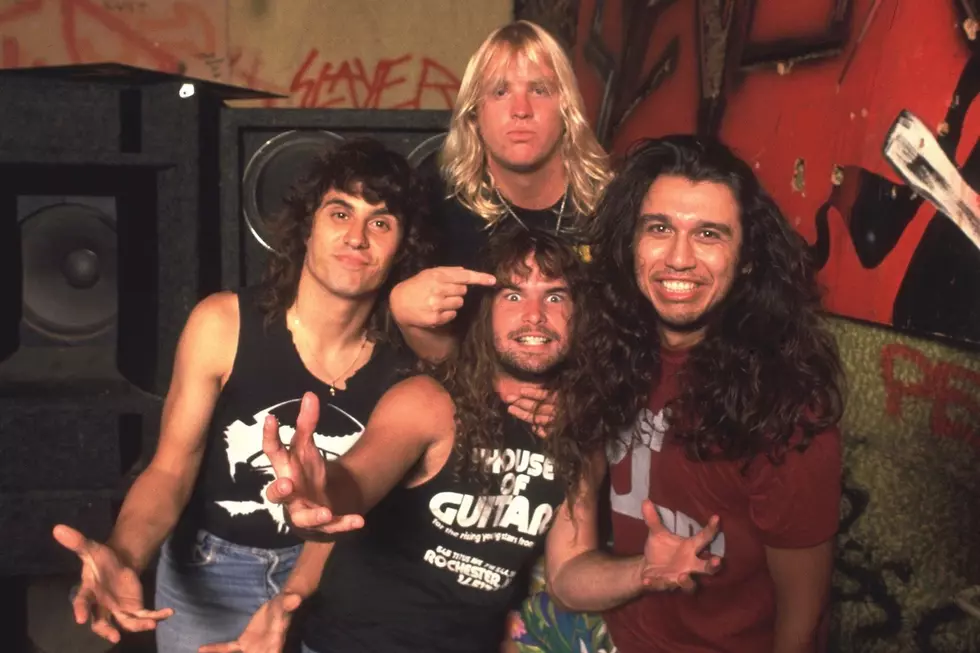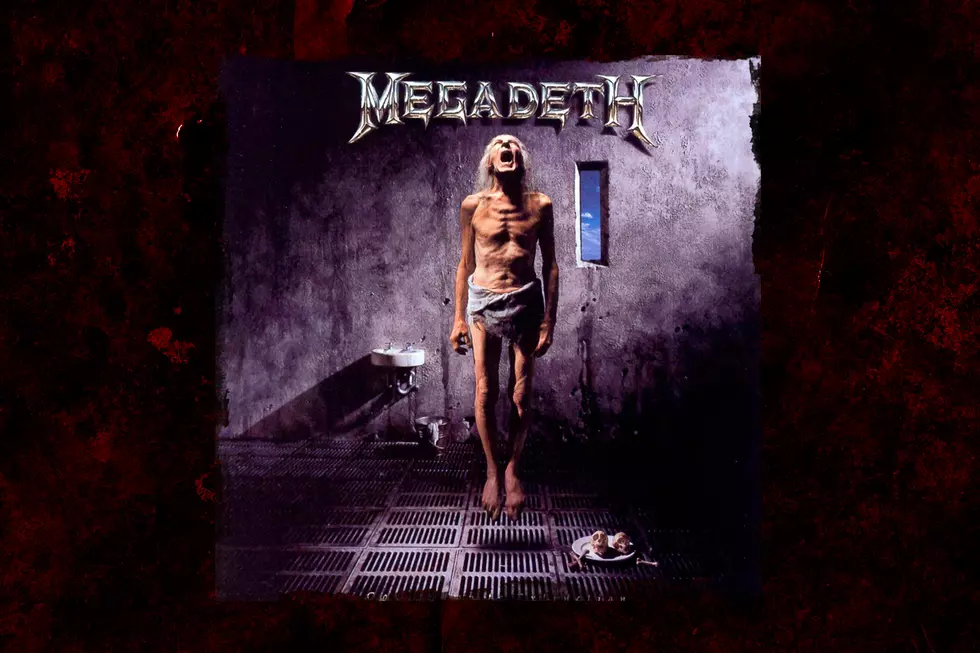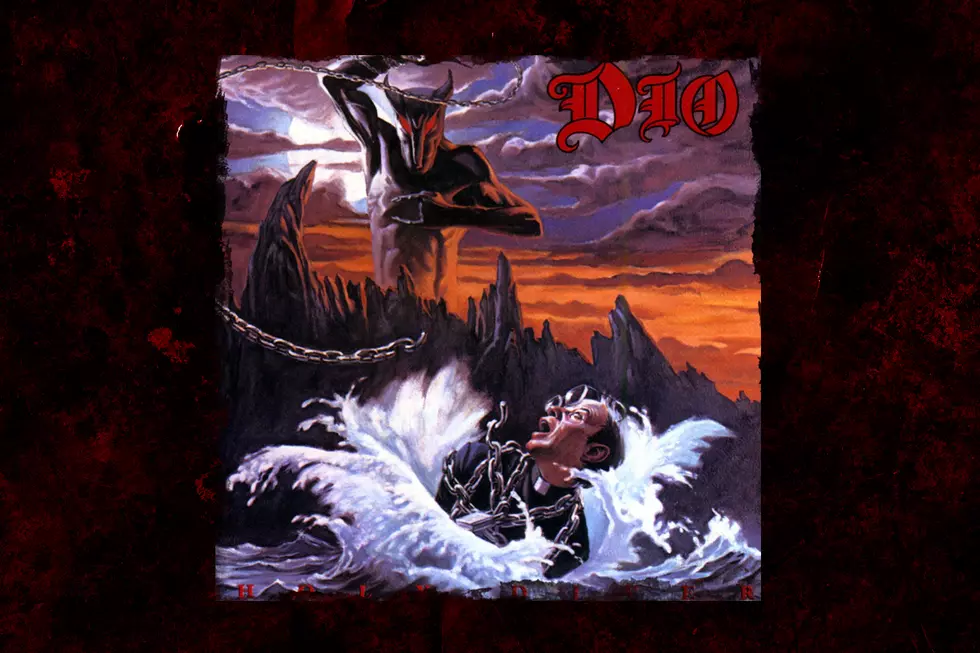Metallica’s ‘Black Album': 8 Facts Only Superfans Know
Metallica's self-titled album is one of the most controversial records in rock and metal history. The band's fifth album bridged the gap between their thrash roots and their bluesier influences and drew in a much larger audience than their previous albums had.
Referred to as The Black Album, the set spawned several hits and ultimately gave them the radio exposure they needed to become a stadium band. Everyone in the world has heard "Enter Sandman," whether at a bar or a sporting event, but there's also "Sad But True," "The Unforgiven," "Nothing Else Matters" and more.
Whether Metallica is the album that made you love Metallica or the album that made you start calling them "sell-outs," it'll forever be an important piece of music history that inspired many generations of bands in the years after its release. Here are eight facts that superfans probably already know, but the rest of you may not.
1. They hardly had radio exposure prior to its release.
Metallica had broken out of the underground with their previous albums, but they still didn't have a lot of radio exposure. “They were still only played on 10 radio stations in America,” Q-Prime's Cliff Bernstein told Classic Rock in 2016.
2. The recruited Bob Rock because of the success of Dr. Feelgood.
Bob Rock was known for working on albums that catapulted bands into major success — he produced Motley Crue's career-saving Dr. Feelgood, engineered Aerosmith's true comeback album Permanent Vacation and mixed Bon Jovi's massively successful Slippery When Wet.
"We felt it was time to make a record with a huge, big, fat low end," Lars Ulrich told writer Mick Wall. "And the best-sounding record like that in the last couple of years was Dr Feelgood. So we told our manager: ʻCall this guy and see if he wants to mix the record.ʼ”
“We wanted to create a different record and offer something new to our audience,” added Kirk Hammett. “I hate it when bands stop taking chances. A lot of bands put out the same record three or four times, and we didnʼt want to fall into that rut."
3. Rock had to choose between working with Metallica and Bon Jovi's Richie Sambora.
Rock had a friendship with guitarist Richie Sambora, who approached the producer about doing a solo album around the same time Metallica were looking to do the Black Album.
He took a vacation with his family to the desert to contemplate the decision, and passed a Native American boy wearing a Metallica shirt on the side of the road. “These were like signs I couldn’t ignore," he explained to Classic Rock. But he wanted to produce the album, not mix it.
4. James Hetfield intentionally made the songs more introspective.
Most of Metallica's previous songs were inspired by events occurring in the world around James Hetfield — not by what was going on in his own personal world. He knew the songs would be relative to a more universal audience if the lyrics were introspective.
“It just got a little too easy to keep writing lyrics like the Justice… shit,” he confessed to Classic Rock. “Itʼs too easy to watch the news and write a fucking tune about what you saw. Writing shit from within is a lot harder than writing the political shit, but once itʼs out it feels a lot easier to put your weight behind, especially live.”
5. Lars Ulrich had no idea who the "Sandman" was.
The song title "Enter Sandman" had been written down for a while, and kept reappearing in Metallica's studio sessions over the years. Ulrich admitted to Wall that he had no idea what the phrase meant.
"Me being brought up in Denmark and not knowing about a lot of this shit, I didnʼt get it. Then James clued me in," he explained. "Apparently the Sandman is like this childrenʼs villain. The Sandman comes and rubs sand in your eyes if you donʼt go to sleep at night. So itʼs a fable. James has just given it a nice twist."
6. "Nothing Else Matters" almost wasn't included.
Hetfield described "Nothing Else Matters" as being about life on the road while on tour and missing home to Jeff Woods a few years back. The song was so personal, and stylistically so different from Metallica's other songs because it was a ballad, that it wasn't intended to be on the album at all. Once it was introduced to the other members of the band, they made the decision to include it.
7. It has several relations to the Gadsden flag.
The coiled rattlesnake depicted on the album cover, as well as the title for the song "Don't Tread on Me," both came from the Gadsden Flag. The lyrics to the song also contain references to the American Revolution, such as "Liberty or death / What we so proudly hail."
8. It's spent over 10 collective years on the Billboard 200.
In December of 2019, the Black Album became the fourth album in American history to have spent over 550 weeks on the Billboard 200 chart, following Pink Floyd's The Dark Side of the Moon, Bob Marley and the Wailers’ Legend and Journey's Greatest Hits. As of August of 2020, it's been on the chart for 580 weeks.
The Best Metal Album of Each Year Since 1970
More From Noisecreep










